With all the rain we had, and our unscheduled end of season trip out of state, the gardens were all left in fairly sad shape last year. This garden, which we still call the 'Bean Bed' (although we grow much more than beans in it now), didn't even get fully planted last year, so the first step was to pick up all the tools, pots, twine, poles, etc.
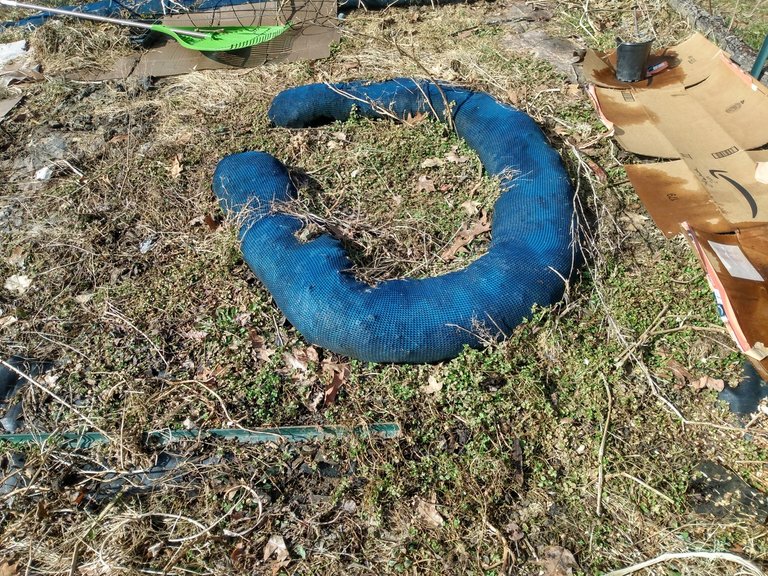
Most of the green you can see in the photo above is a variety of ground violet that has always spread rapidly in this garden. Despite the apparent thickness of this cover, it pulls up pretty easily.
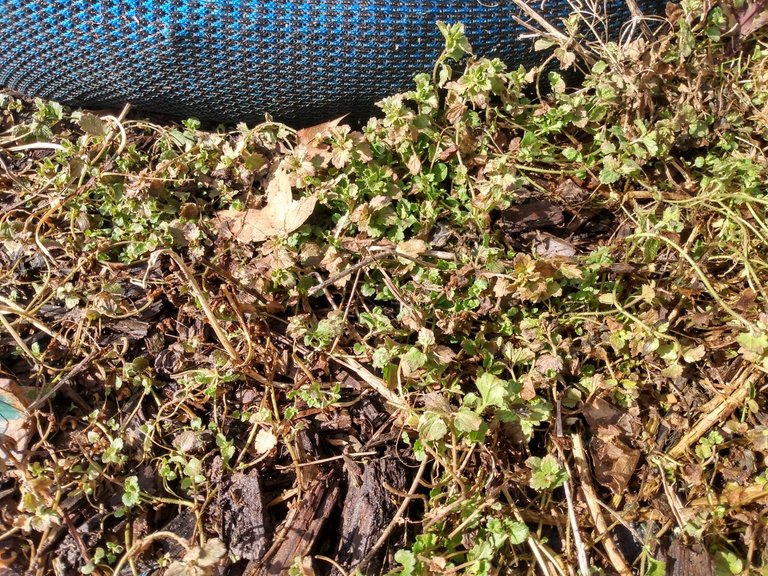
The grass is a bit more stubborn, and still a problem in the new area where I added strawberries last spring. You can barely see the poor strawberries trying to struggle to life, until I get the weeds pulled from around them.
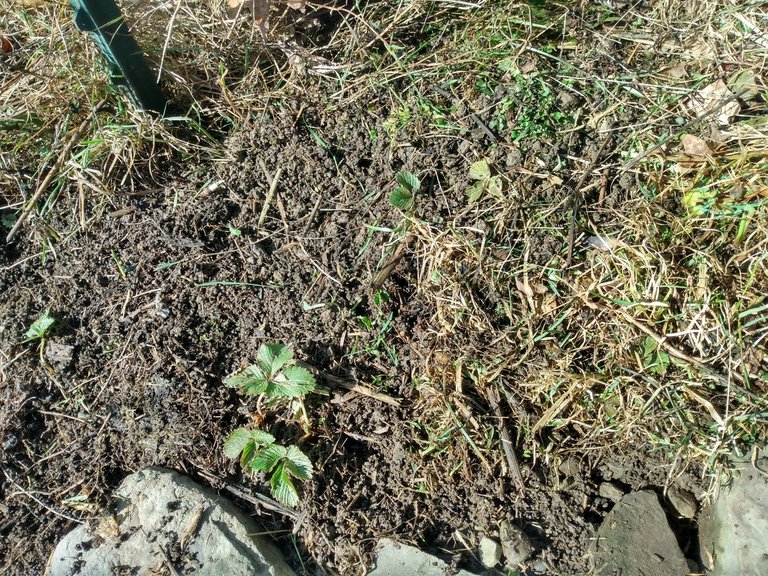
This lower corner is the worst part, and it's difficult to get all the weeds out while still leaving some strawberries behind. I always like to get the most difficult part of a task out the way first, if I can, so the job gets progressively easier as I become more tired.
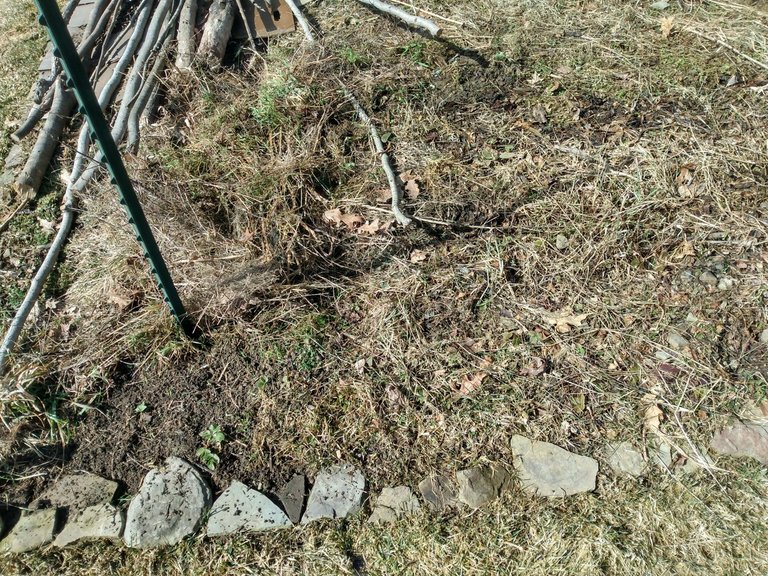
They don't look like much from a distance, but they seem very happy and eager to get growing! Hopefully today I'll be able to get some mulch around them. These are all June bearing strawberries, some wild and a couple popular varieties.
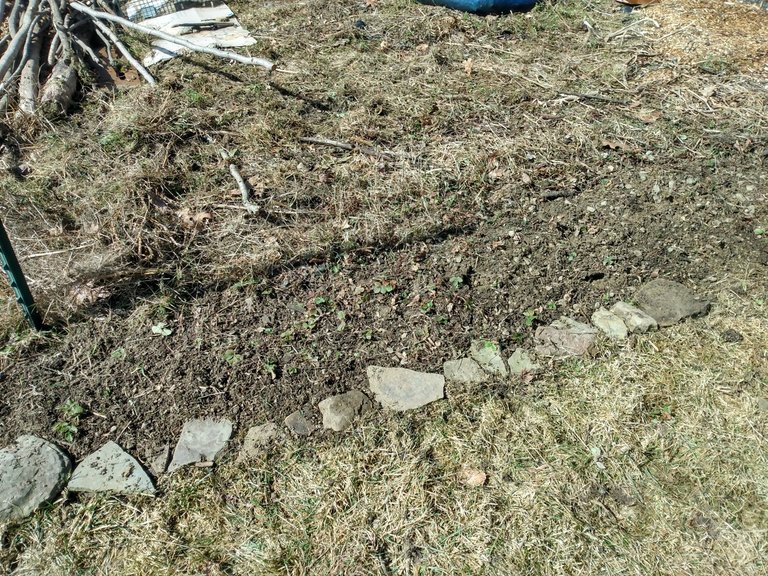
There's always some new rocks to be found, so I keep a bucket handy to throw the smaller ones into. The larger rocks get placed on the border, or left around the garden to use as weights to hold down weed barriers and row covers.
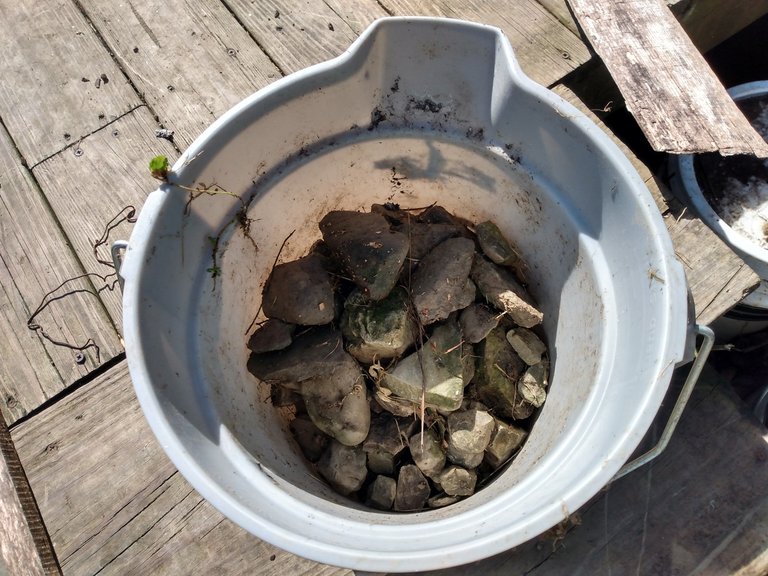
The smaller rocks get dumped wherever they are needed, this time of year that's usually in the driveway. The puddles linger in the low spots with the cooler temperatures, and that tells me exactly where to dump my stones. I don't have pictures of what the driveway used to look like, to give you an idea of just how much a few bucketfuls of stone each season can add up over the years. When I moved into the house, you couldn't drive on a lot of this in the springtime.
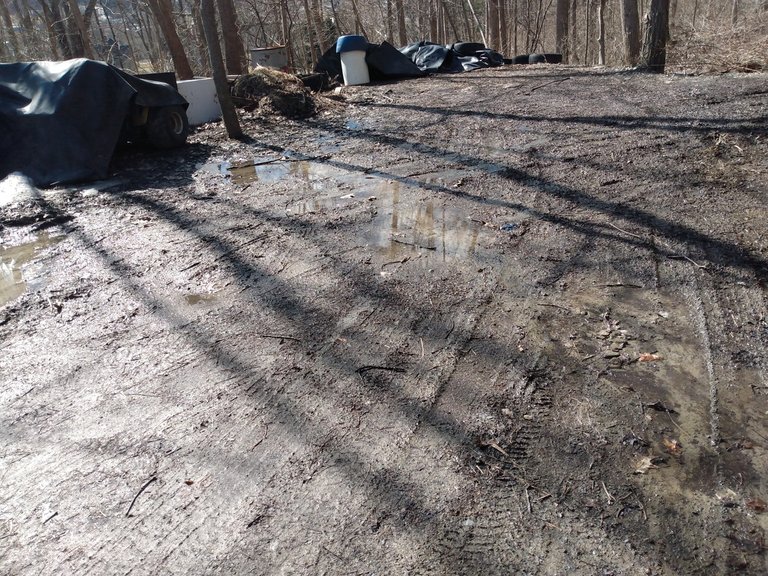
We used to used this black plastic that I can get at work as weed barrier between the rows, but I've given up on this stuff and just use cardboard now. As you can see, our most prevalent garden weed happily grows right on top of the plastic. This particular plastic also blocked too much rainwater from getting into the soil (which might have actually been useful last year!).
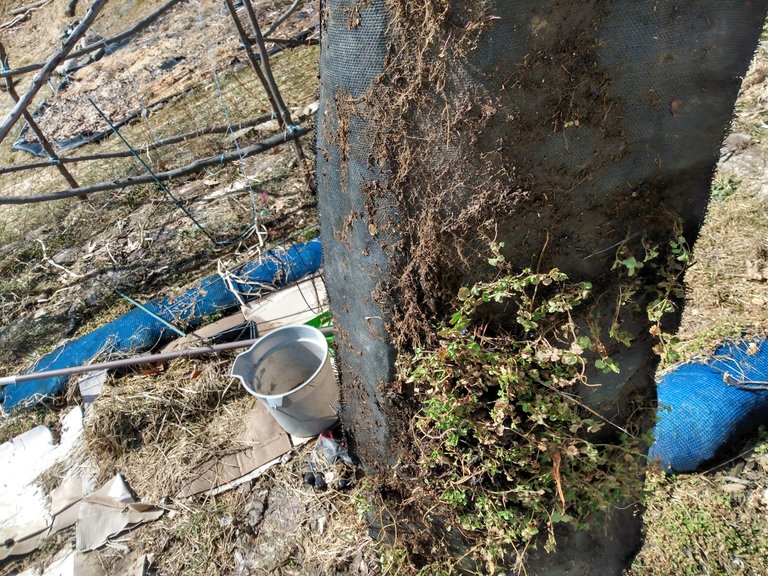
I've been tossing usable poles into this garden since last fall. We're looking to expand our vertical gardening this year, and I'd much rather use these poles I've cut from local trees than go spend my hard earned money on sub-standard lumber. Nothing lasts forever out in the environment here, but at least these are free, and didn't have to be carried up from the driveway.
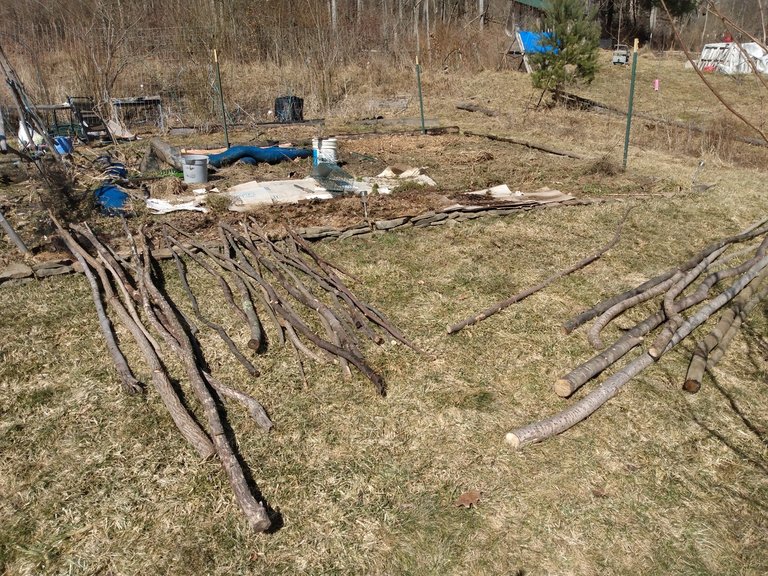
In the picture below, the weedy space on the right side of the garden bed is where I want to set up the new vertical frame. The row that looks tilled on the left side I prepped for planting some of the early brassicas. I don't actually need to till out here any more, the soil gets loosened enough just by pulling the weeds.
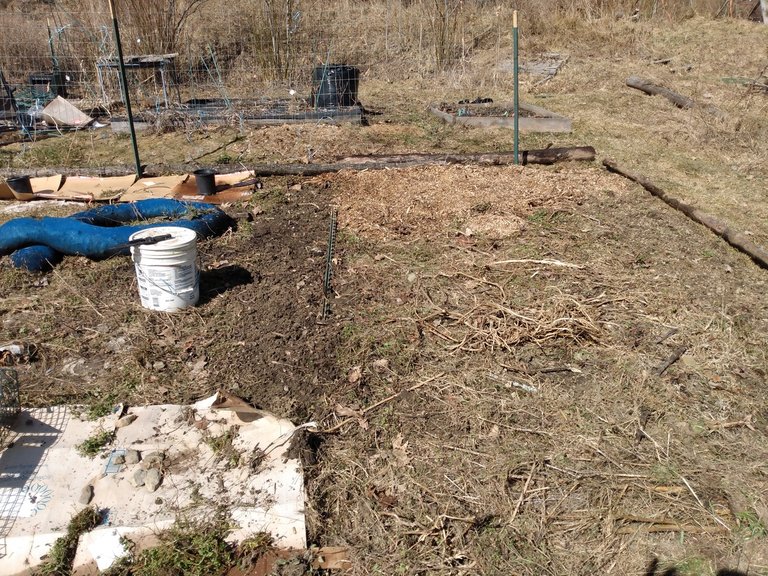
I sort my poles by length, and trim a few of them for making three upright 'doorways', which will be the main supports for the new frame. I use the thickest poles for these, since they will be bearing most of the weight.

These uprights are around 10' tall, so I lashed them together while on the ground, rather than doing the extra work from the ladder. With 20/20 hindsight, I can see that I should have also tied the cross braces to these while they were on the ground.
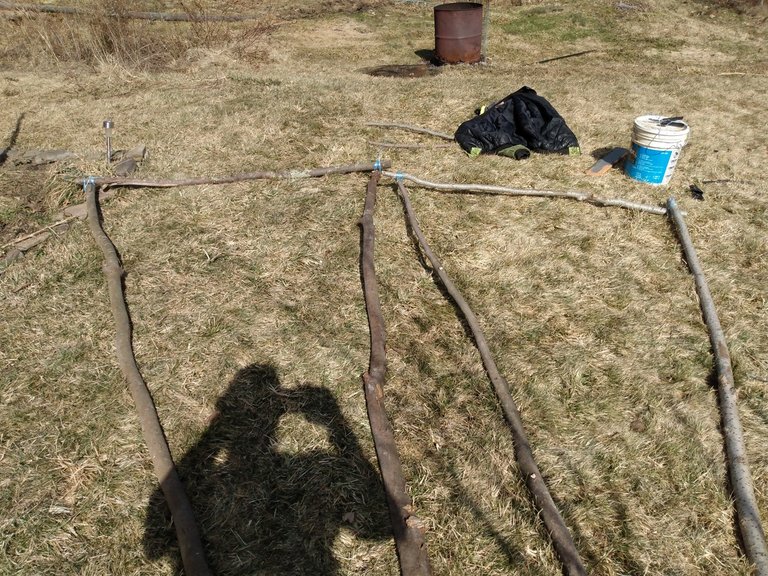
Of course, getting them all standing up and connected together was a bit challenging. Hedge Witch came outside and helped me for a bit, which made it tremendously easier to get the cross pieces attached at the top.
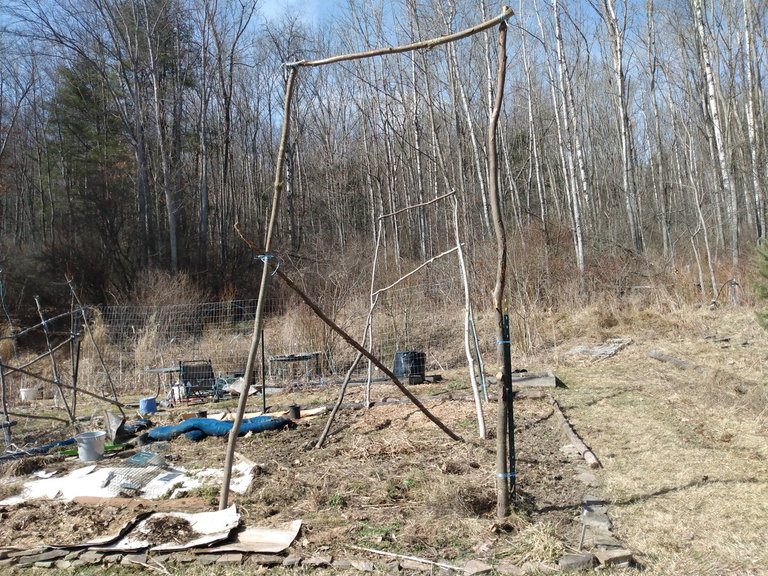
I've worked at it here and there over the course of the last week, as weather permitted. It still doesn't look like much, but each of those upright poles is sturdy enough for me to climb to the top (yes, I did that) so I think they'll hold the weight of some of this years tomatoes and cucumbers. There's still more that I want to add to this before summer, but having this much of it done now helps me layout my plantings as the year moves on.
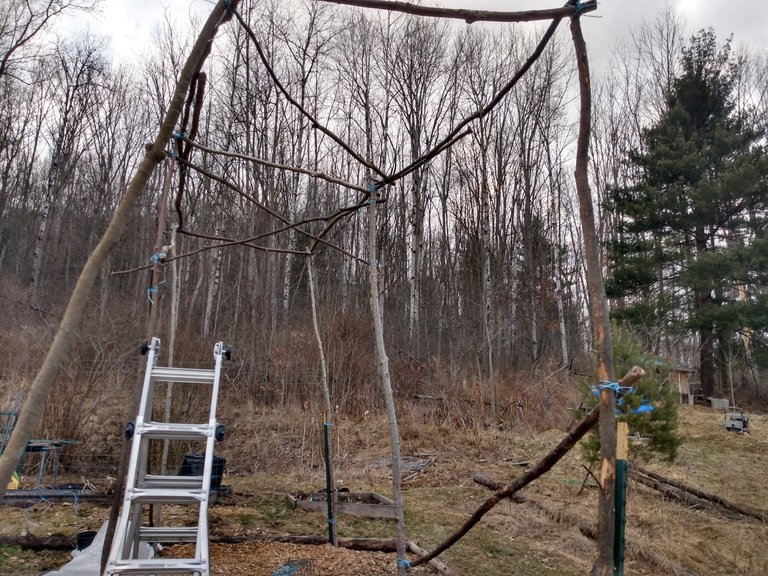
It's already time to put some of that spatial planning to good use, as most of our early brassicas (from this post) are already bursting out of their pots with their anxiety to get into the ground! This kind of dense root growth is exactly what I want to see when moving plants. In previous years, fungus gnat infestations have seriously inhibited root growth. This year we finally seem to have them under control.
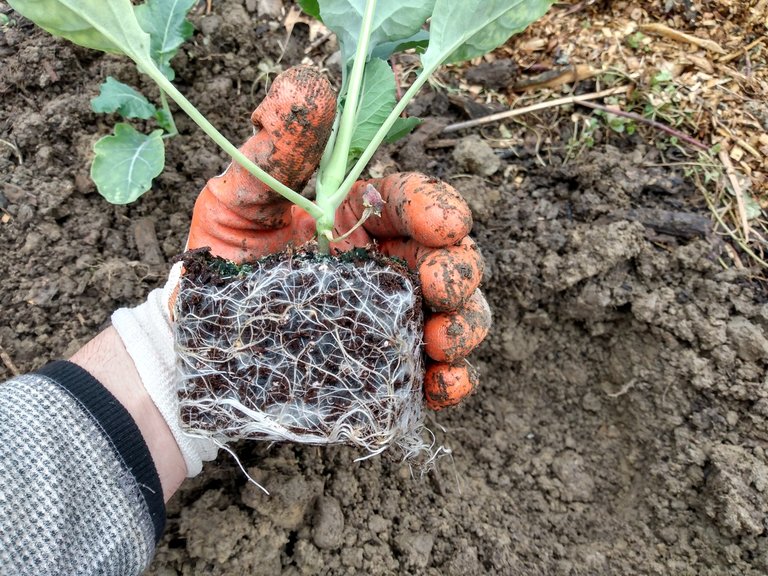
I go down the row and loosen the spots where I want to plant with a Garden Claw, then scoop the dirt out by hand. I find that a good hand scoop is the perfect sized hole for the starter pots I had these in.
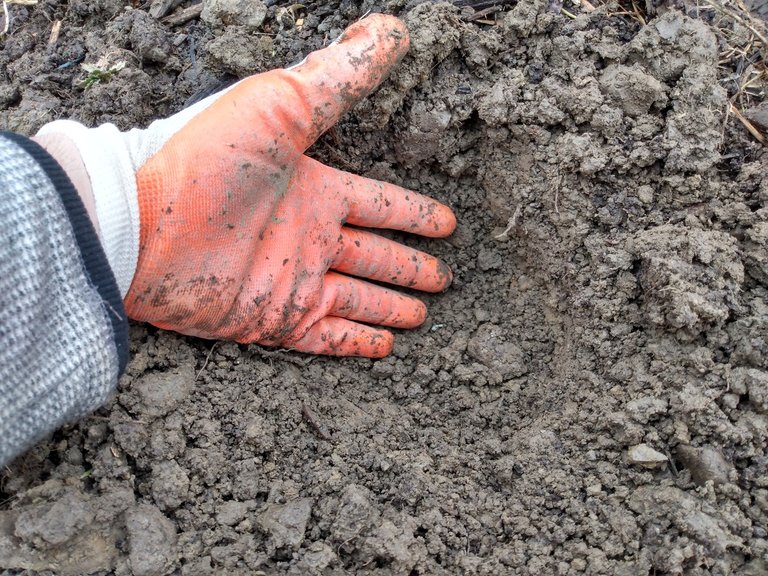
I like to pull at the bottom roots to loosen them a little before I transplant things. I don't know that it helps it all... there have definitely been times that I've forgotten and skipped this step, and it didn't seem to cause the plants any harm. Most guides will suggest it, and it's just a reflex for me now.
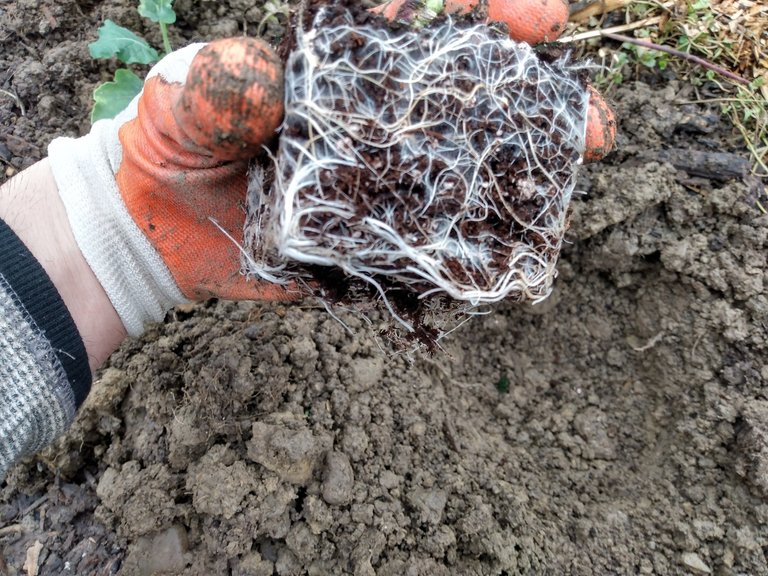
I'm not putting everything out yet, just 3 each of the broccoli, cauliflower, and red cabbage. I don't want to lose all of these beautiful plants if we get a hard freeze that row covers aren't enough for, and I don't want to lose everything to some early woodchuck. I also don't have row hoops or covers for everything just yet. I'm also giving these a little more room than normal... a touch over the recommended 12" spacing as opposed to the touch under 12" I normally use. I want to see if it makes a significant difference in the amount of trimming I need to do, or the yield that I get.
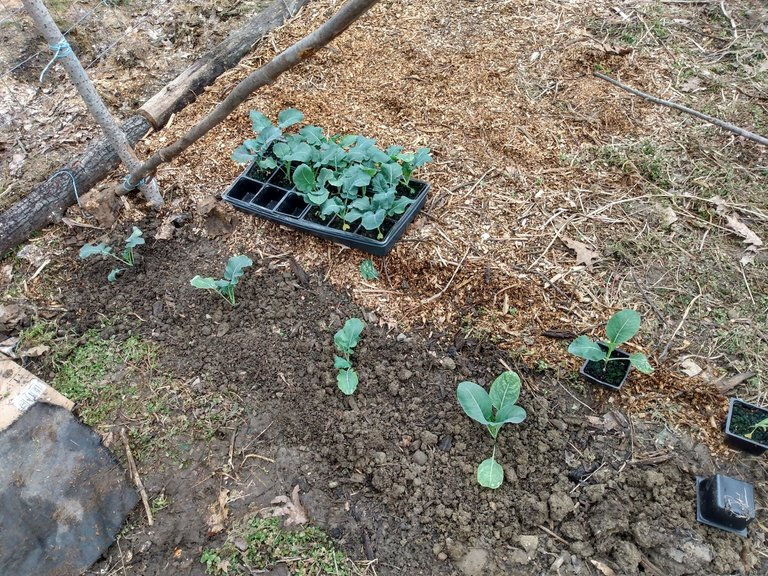
I'll put the row covers on every night for now, even though the temperatures aren't getting that low, to help keep the deer, rabbits, and woodchucks out of them. They all tend to come mostly in the very early morning, before we get out into the yard.
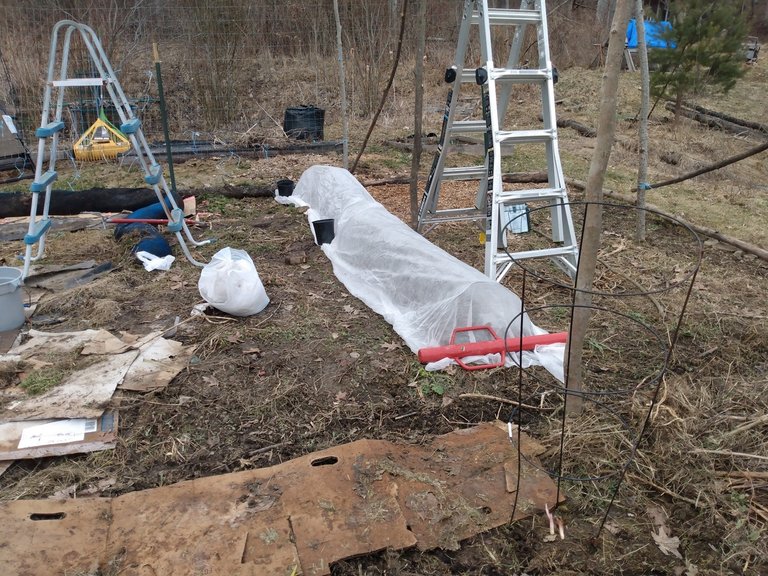
Because I'm still covering them every night, I just flop one side over during the day, rather than pick the whole cover up. This way it only takes me a couple minutes to cover and uncover them each day. I was a bit worried that I may need to cover them in the afternoon as well, because we've had a lot of sunburn on our spring plants the last few years. These seem to be doing fine in full sun so far.
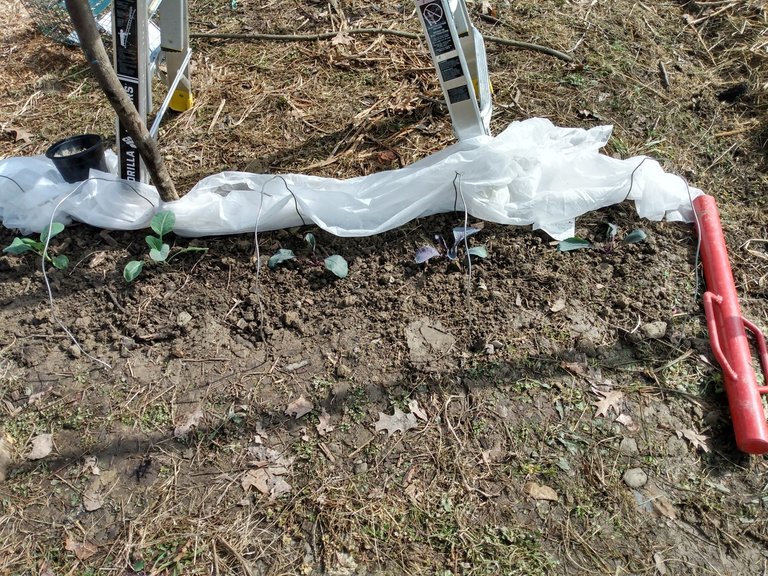
This is what's left of my pile of poles after getting the basic structure for the new vertical frame set up. Most of these will still get added on to that frame, but a few will get used to make tripods for peas. I have another pile of larger poles, to use on some even more ambitious projects for our grapes and luffa gourds. That, however, will be a post for the future.

Thanks for joining me on this garden adventure! After the disappointment we had last year, we're barely able to contain our excitement for the coming season. Hopefully, this year I'll find the time to share it all, with all of you!

